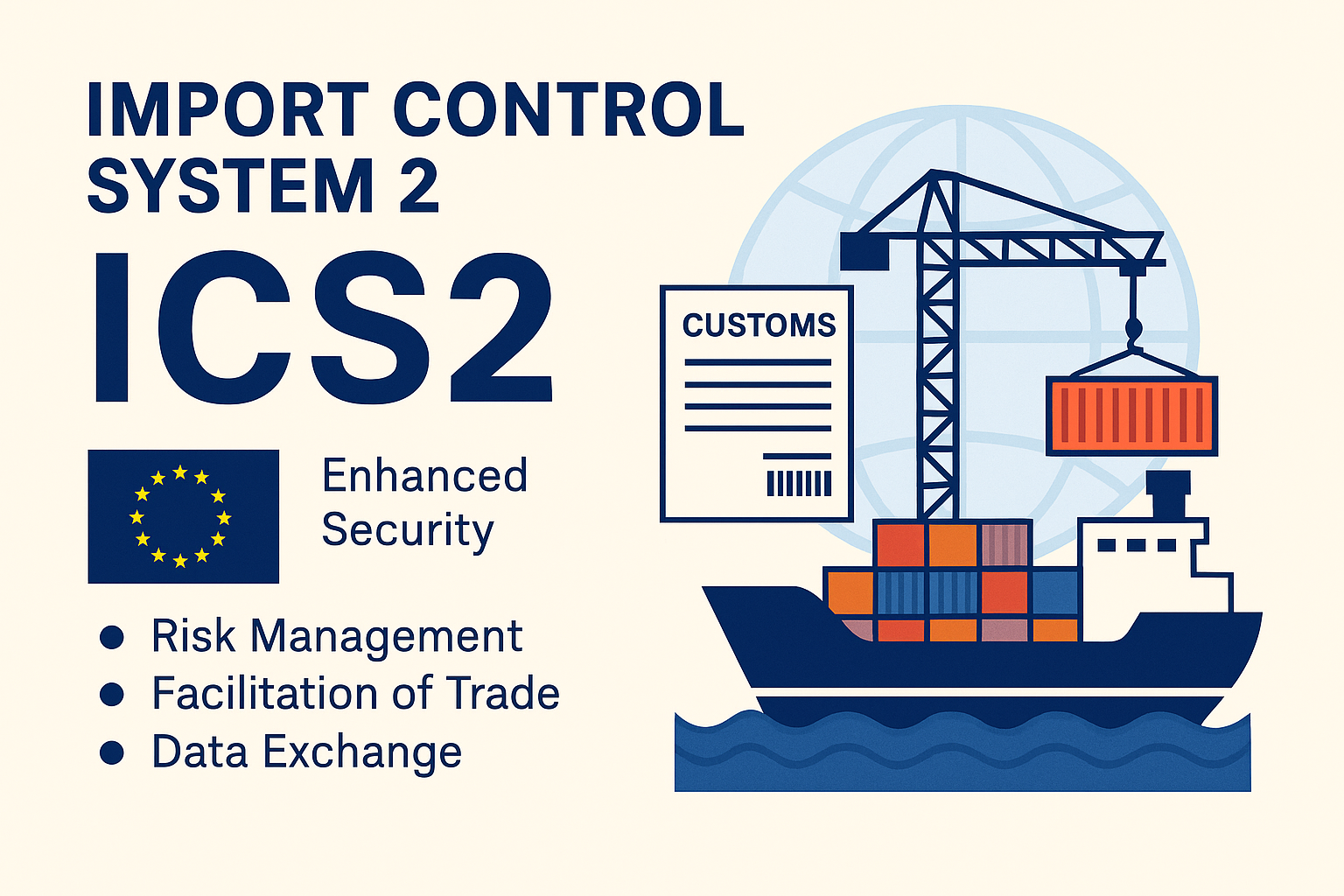ICS2 is not only a key pillar in safeguarding the EU Single Market and its citizens but also a major step toward digitalized, data-driven customs operations. For ocean carriers, non-vessel-operating common carriers (NVOCCs), and freight forwarders, the new requirements will become fully mandatory from December 4, 2024, reshaping the way international shipments are handled.
1. Overview and Core Function of ICS2
ICS2 is an advanced EU-wide cargo information system designed to collect, process, and analyze data for all goods entering the Union. Its primary goal is to perform pre-arrival safety and security risk assessments before shipments reach EU borders.
As the successor to ICS1, the new system leverages modern IT infrastructure and harmonized regulatory standards to support the Common Risk Management Framework (CRMF), enabling all 27 member states to share data seamlessly and detect risks early in the supply chain.
2. Objectives and Key Features
ICS2 is built on the principle of data-centric, risk-based control, focusing on:
- Enhanced Security: Strengthening protection against terrorism, smuggling, and other illicit trade activities.
- Efficient Risk Management: Enabling customs to target high-risk consignments for inspection more effectively.
- Facilitation of Legitimate Trade: Simplifying clearance for compliant operators and reducing logistics delays.
- Crisis Resilience: Allowing proportionate and flexible responses in times of crisis such as pandemics or supply-chain disruptions.
- Seamless Data Exchange: Improving communication between Economic Operators (EOs) and customs administrations across the EU.
At the heart of ICS2 lies the Entry Summary Declaration (ENS), a mandatory electronic submission required for all goods entering, transiting, or being re-exported through the EU.
ENS enables customs authorities to conduct pre-loading risk analysis and determine whether shipments can be loaded. Without a valid Movement Reference Number (MRN), goods will not be permitted to load — a strict “No MRN, No Load” policy now enforced across all carriers.
4. Phased Implementation and Major Changes
ICS2 is being implemented in three stages:
- Phase 1 (March 2021): Applied to express and postal air carriers.
- Phase 2 (March 2023): Extended to all air cargo operators and their economic partners.
- Phase 3 (from June 2024): Covers maritime, rail, and road transport — achieving full multimodal coverage by late 2024.
- More Granular Data Requirements: Each shipment must include a full commercial description, six-digit HS code, and complete details of the actual consignor and consignee.
- House B/L-Level Declarations: NVOCCs and freight forwarders must now file ENS at the House Bill of Lading level, not just at the master level.
- Earlier Electronic Submission: ENS data must be transmitted at least 24 hours before loading, fully in digital form.
To comply with ICS2 regulations, carriers and freight forwarders must provide comprehensive information, including:
- Cargo Details: Transport routes, transit points, vessel name, container and seal numbers.
- Trade Parties: Seller, buyer, actual consignor, and consignee, each with valid EORI (Economic Operator Registration and Identification) numbers.
- Goods Classification: Accurate product descriptions and HS codes.
6. Opportunities and Long-Term Benefits
While ICS2 introduces operational and data-management challenges, it also offers significant long-term advantages:
- Trade Facilitation: Compliant operators will benefit from faster clearance and pre-release authorization.
- Enhanced Supply-Chain Security: Comprehensive risk profiling reduces the likelihood of illegal or unsafe shipments.
- Global Standardization: Alignment with similar systems in the United States, Canada, and Japan fosters greater consistency and mutual recognition in international trade.
The full deployment of ICS2 marks a pivotal step in the EU’s evolution toward a data-driven and intelligence-led customs ecosystem.
For logistics providers and international shippers, early preparation is essential — ensuring accurate ENS submissions, upgrading internal IT systems, and training staff to handle complex data requirements.
Ultimately, ICS2 represents more than a compliance obligation. It is an opportunity to build a safer, smarter, and more transparent global supply chain, reinforcing trust and efficiency in cross-border trade for years to come.
If you have further problem for ICS2, you could contact us via the hot line as below;


